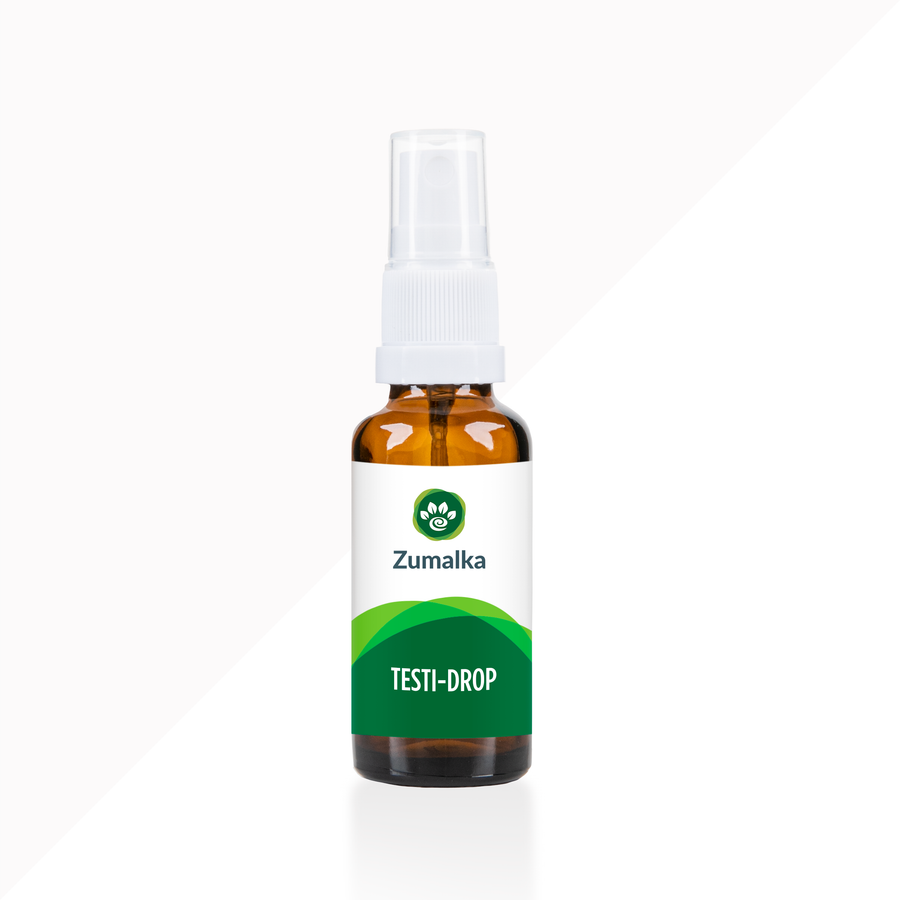Vet Insights: Cryptorchidism in Dogs – 3 Hidden Health Dangers
Cryptorchidism, or retained testicle, is a condition that affects many male dogs. Although it might not appear concerning at first, it can lead to three serious health risks if left unaddressed. Taking action early is key to ensuring your dog stays healthy and safe.
Understanding cryptorchidism in dogs is crucial for responsible pet care and ethical breeding. In this article, we’ll explore the health risks associated with this condition and how to protect your dog’s well-being.
What is Cryptorchidism?

Cryptorchidism, or undescended testicles in canines, occurs when one or both of a dog’s testicles do not properly descend into the scrotum. This condition is among the most frequent congenital defects in purebred dogs and can lead to serious health issues if left untreated.
The most common sign of cryptorchidism in dogs is a missing testicle in the scrotum.
In most male puppies, the testicles descend into the scrotum by eight weeks of age, although some may take up to 16 weeks. At birth, the testicles are located near the inguinal ring and normally move into position through the guidance of a structure called the gubernaculum.
Cryptorchidism can be unilateral, where one testicle is retained, or bilateral, with both testicles affected; unilateral cases are more common, especially on the right side. The retained testicle may be located in the abdomen or anywhere along its normal descent path to the scrotum.
What are the 3 Health Risks Associated with Cryptorchidism in Dogs?
Retained testicles can lead to serious health complications in dogs, including testicular cancer, testicular torsion, and infertility. These risks make early diagnosis and treatment of cryptorchidism essential for your dog’s long-term health and quality of life.
#1. Retained testicles significantly increase a dog’s risk of developing testicular cancer.
Dogs with cryptorchidism face a significantly increased risk of developing testicular cancer, estimated to be at least ten times higher than in normal dogs. One study found the risk ranged from 3.6 to 13.6 times greater, highlighting the importance of early intervention.
#2. Testicular torsion is a potential complication of cryptorchidism in dogs.
In dogs with cryptorchidism, testicular torsion is a serious risk that can cause sudden pain and dangerous loss of blood flow. If a retained testicle twists, it may lead to tissue damage and require emergency treatment.
#3. Cryptorchidism in dogs can lead to infertility.
Infertility is a potential consequence of cryptorchidism in dogs, particularly when both testicles are retained. Bilateral cryptorchidism significantly reduces sperm production and can make natural breeding impossible.
Quick note: According to American Kennel Club (AKC) standards, dogs with cryptorchidism are disqualified from conformation shows and should not be bred. Removing the retained testicle is strongly advised to prevent cancer and safeguard the dog’s long-term health.
What is the Genetic Basis of Cryptorchidism in Dogs?

Cryptorchidism in dogs is widely believed to have a genetic basis and is considered an autosomal recessive inherited trait. Because the condition can be passed down from both parents, affected dogs should not be used for breeding.
Certain dog breeds are more likely to be affected by cryptorchidism, including the Yorkshire Terrier, Pomeranian, French Poodle, Siberian Husky, and Miniature Schnauzer. Others at higher risk include the Shetland Sheepdog, Chihuahua, German Shepherd, Dachshund, Maltese, Toy Poodle, English Bulldog, and Boxer.
While these breeds show increased prevalence, cryptorchidism can occur in any dog, including mixed breeds.
The AKC Canine Health Foundation is actively researching the genetic basis of cryptorchidism in dogs to support responsible breeding. By collecting DNA samples from both affected and unaffected dogs, researchers are using DNA microarray technology to identify genetic markers linked to the condition.
The ultimate goal is to pinpoint the genomic region responsible for abnormal testicular descent and develop predictive DNA tests to guide breeding decisions.
How is Cryptorchidism Diagnosed in Dogs?
Cryptorchidism in dogs is commonly diagnosed through a veterinarian’s physical exam, checking for both testicles in the scrotum by eight weeks of age.
If one or both are not detectable, confirmation may be delayed until the puppy is four to six months old. Vets may also palpate the abdomen and groin to locate any retained testicles that have not descended properly.
In older dogs where a testicle may have been previously removed, veterinarians will check for surgical scars and review the dog’s medical history. When records are unclear, hormone-based tests like hCG or GnRH response tests can help determine castration status.
These diagnostic tools are especially useful in confirming whether a retained testicle is still present.
What are the Treatment and Management Options for Cryptorchidism in Dogs?
Neutering is the only conventional treatment for cryptorchidism in dogs and involves removing both the descended and undescended testicles.
Surgery can be more complex and costly than a routine castration, as the retained testicle may be difficult to locate. In some cases, multiple surgical sites are required to ensure complete removal and prevent future health complications. This means if one testicle is in the scrotum and the other is retained (such as in the abdomen), the veterinarian may need to make two separate incisions to remove each one.
To emphasize, in cases of cryptorchidism where natural approaches haven’t brought results, neutering may become a necessary last resort to help prevent future health complications and risks. Neutering prevents breeding and significantly lowers the risk of testicular cancer and torsion.
After surgery, following your vet’s post-operative care instructions, such as using a cone or body suit to prevent licking, is crucial for proper healing. Routine follow-up visits help ensure the surgical site heals safely and without complications.
In some cases, neutering may be delayed until around one year of age to allow time for testicular descent. However, this decision should always be made in consultation with a veterinarian or a pet homeopathy specialist.
Following professional guidance ensures timely intervention and reduces the risk of long-term health issues.
Are There Natural Support Products for Cryptorchidism in Dogs?

Zumalka’s TESTI-DROP – OPTIMAL KIT is specially formulated to support healthy testicular development in young male dogs.
This gentle, homeopathic-based kit is designed to support overall reproductive wellness and normal development in pets. It includes a blend of carefully selected natural remedies traditionally used to encourage tissue health, support healthy circulation, and maintain balance during growth and maturation.
The TESTI-DROP – OPTIMAL KIT includes:
TESTI-DROP – A homeopathic formula that helps support the body’s natural processes related to testicular positioning and comfort.
TONICPET #1 – Traditionally used to help maintain healthy tissue tone, elasticity, and vascular integrity.
TONICPET #2 – Supports general cellular health and development during growth stages.
TONICPET #4 – Helps maintain healthy oxygenation and overall vitality at the cellular level.
TONICPET #12 – Promotes balance and fluid movement in the body’s tissues for dogs with retained testicles.
What is the Prognosis for Dogs with Cryptorchidism?
The prognosis for dogs with cryptorchidism is excellent when the condition is treated early with surgical intervention. Timely neutering helps prevent serious complications like cancer or torsion. Exploring options like TESTI-DROP can also help provide relief. With proper care, most dogs go on to live healthy, active lives.
FAQs
How do you treat cryptorchidism in dogs?
Cryptorchidism in dogs is traditionally treated through surgical removal of the retained testicle(s), typically via neutering. Natural alternatives can also be safely considered with the help of a pet homeopathic specialist. Early intervention prevents complications like cancer or torsion, ensuring your dog’s long-term health and well-being.
Can a dog live with cryptorchidism?
Yes, a dog can live with cryptorchidism, but leaving it untreated increases the risk of testicular cancer and other complications. Surgical removal of the retained testicle is strongly recommended to ensure long-term health. Exploring options like TESTI-DROP can also be beneficial.
When should a cryptorchid dog be neutered?
For dogs with cryptorchidism, it's ideal to first explore natural support options, such as Zumalka’s TESTI-DROP, to encourage normal development during early growth. If the testicle(s) have not descended by 6 to 12 months of age, veterinary surgery may be recommended to help prevent potential complications like testicular torsion or cancer and to support long-term well-being.
Are cryptorchid dogs more aggressive?
Cryptorchid dogs may show increased aggression due to retained testicles producing testosterone. Neutering typically reduces these hormone-driven behaviors, promoting a calmer temperament and preventing serious health risks like cancer or testicular torsion.
What happens if cryptorchidism is left untreated?
If cryptorchidism is left untreated, the retained testicle can develop cancer or twist (torsion), causing pain and life-threatening complications. Early surgical treatment is crucial to protect your dog’s health and well-being. Exploring options like TESTI-DROP can also be beneficial.
Do dogs feel testicle pain?
Yes, dogs can feel testicle pain, especially from injury, infection, or cryptorchidism. Signs include licking, swelling, or behavioral changes. Prompt veterinary care and pet homeopathy support ensure relief, comfort, and protection from serious health issues.
Can cryptorchidism in dogs be cured?
While surgery can resolve cryptorchidism by removing the retained testicle and helping prevent potential health risks, many pet parents choose to explore natural support options first. Approaches that promote healthy development and balance may offer gentle support during early growth, with surgery remaining an option if needed to ensure long-term well-being.
What are the complications of cryptorchidism surgery in dogs?
Complications of cryptorchidism surgery in dogs are rare but may include bleeding, infection, or anesthesia reactions. Choosing an experienced veterinarian ensures a safe procedure, quick recovery, and long-term protection from serious health risks.
Can an undescended testicle correct itself in dogs?
In most cases, if a testicle has not descended by six months of age, it is unlikely to do so on its own. While veterinary evaluation is important to monitor your dog’s development, many pet parents choose to try natural support options, like TESTI-DROP, before considering surgery. These approaches may help encourage balance and normal development during a critical stage of growth.
When should I neuter my dog?
You should neuter your dog between 6 to 12 months of age, depending on breed and health. Neutering helps prevent unwanted behaviors, reduces cancer risk, and supports a longer, healthier, and happier life.
How long does it take for a dog to recover from cryptorchidism surgery?
Most dogs recover from cryptorchidism surgery within 10 to 14 days. With proper post-operative care, including rest and monitoring, your dog can heal smoothly and return to normal activities quickly and safely.
A Final Word
Cryptorchidism is a hereditary condition in dogs that may lead to complications if left unaddressed. While surgical intervention is commonly recommended, early natural support and responsible breeding practices may help encourage healthy development and reduce long-term risks.
With timely care, whether through natural options or veterinary treatment, dogs with this condition can enjoy a positive outlook. Consulting your veterinarian or a pet homeopathy specialist is a great step toward supporting your dog’s overall well-being.








Leave a comment